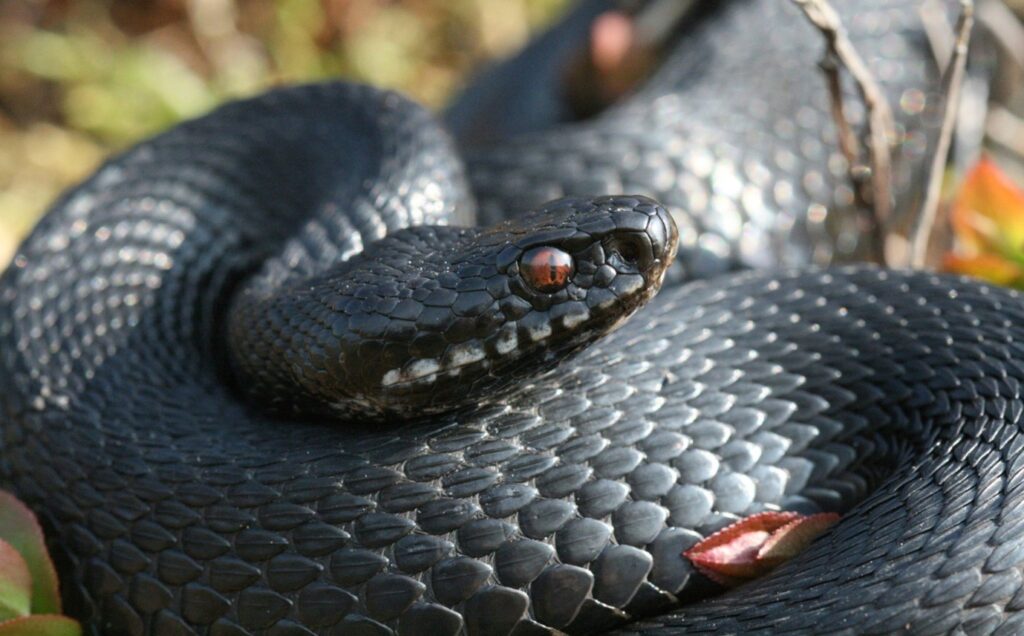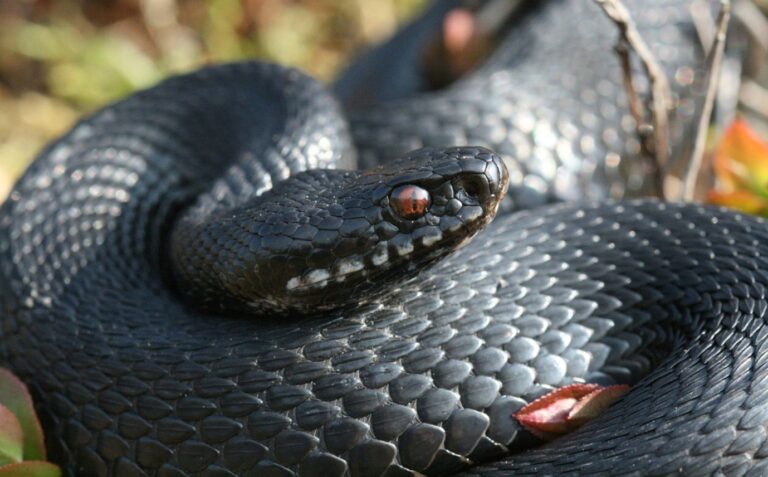Kevin Palmer, Lecturer in Conservation Biology at Chester, announces his plan to bring research investigating the unexpected impacts of human recreation on adders to the Quantock Hills next spring
Picture the scene: a beautiful spring morning, the mid-morning sun warming your back as you traverse the Quantock Hills on foot. You’re accompanied by your two- or four-legged friends, perhaps with a pair of binoculars or a camera in hand. As you navigate the winding trails across the common, your eyes are drawn to a small, slender form, nestled in a gap in the heather — dark in colour, adorned with a striking zigzag pattern and unmistakable deep red eyes. An adder – freshly emerged from its winter slumber, basking in the spring sunshine to reinvigorate and kick-start its annual cycle.

It’s a beautiful sight to behold — one I have eagerly anticipated every spring since my first adder encounter more than 25 years ago. Yet, with use of natural spaces increasing in intensity and space, with many previously inaccessible areas now being visited, I find myself asking: what effects might your activity, or even your mere presence, have on the UK’s most infamous and revered reptile?
The adder is the world’s most widely distributed terrestrial snake species, yet its status across the UK is a growing cause for concern. Research by Gardner and colleagues (2019), using citizen science data from the ‘Make the Adder Count (MTAC)’ project (2005–2016), provided the most comprehensive assessment of the species’ distribution and population size in the UK to date. In their survey of 129 sites, the researchers found that 91% of sites had small populations (fewer than 10 adults), leading to predictions of widespread extinction for these vulnerable populations by 2032, assuming current rates of decline continue. Notably, among the various threats facing adders in the UK, public pressure—primarily through recreational disturbance—was the most frequently reported threat (48% of sites). However, the role of disturbance in the adder’s decline remains poorly understood and underexplored.
While there has been a great deal of discussion (and speculation) amongst conservationists, ecologists and land managers regarding the impacts of public pressure and disturbance events on UK adders, there is very little scientific basis to support these concerns. As such, there are several fundamental questions which warrant investigation:
Does recreational disturbance affect adders across their UK distribution? What are the consequences of possible disturbance to the physiology, behaviour, habitat use and movements of adders? If there is indeed an impact, are adders able to compensate for disturbance in some way, for example – basking for prolonged periods of time, or avoiding areas of high public pressure? Do such potential impacts affect whole populations of adder, rather than simply individuals? And what measures might be introduced to help avoid, mitigate or offset these potential impacts to adders across landscapes?
These fundamental questions will form the basis of my PhD research, part of which will be based on adder assemblages found on the Quantock Hills. To address these questions, I will be using a combination of passive observations, behavioural trials and radio-telemetry to investigate the impacts of recreational activity on adders, comparing areas of high, intermediate and low recreational use.

Through my research, I aim to better understand what recreational disturbance looks like for adder populations, with the goal of assessing its impacts and, most importantly, identifying pragmatic and effective actions to mitigate these effects, ultimately helping to conserve these increasingly sensitive populations at a landscape scale. A secondary goal of this work is to improve communication with recreationists, raising awareness of their impact on wildlife while fostering a balance between their interests and the protection of natural landscapes.
I look forward to providing further updates on the progress of this research in the years ahead (stay tuned!).
Kevin Palmer, Lecturer in Conservation Biology | PhD Researcher, University of Chester
~
If you’d like to join the Friends volunteer group that meets to learn how to survey for adders and who will be helping with Kevin’s research, get in touch.
